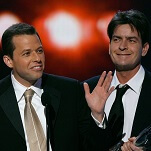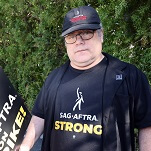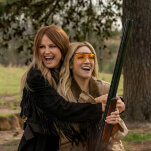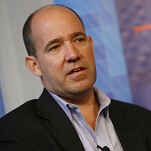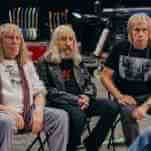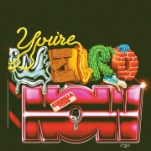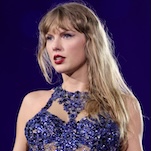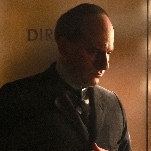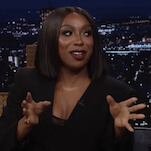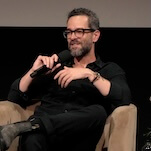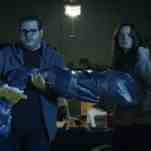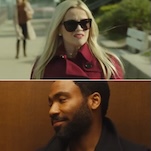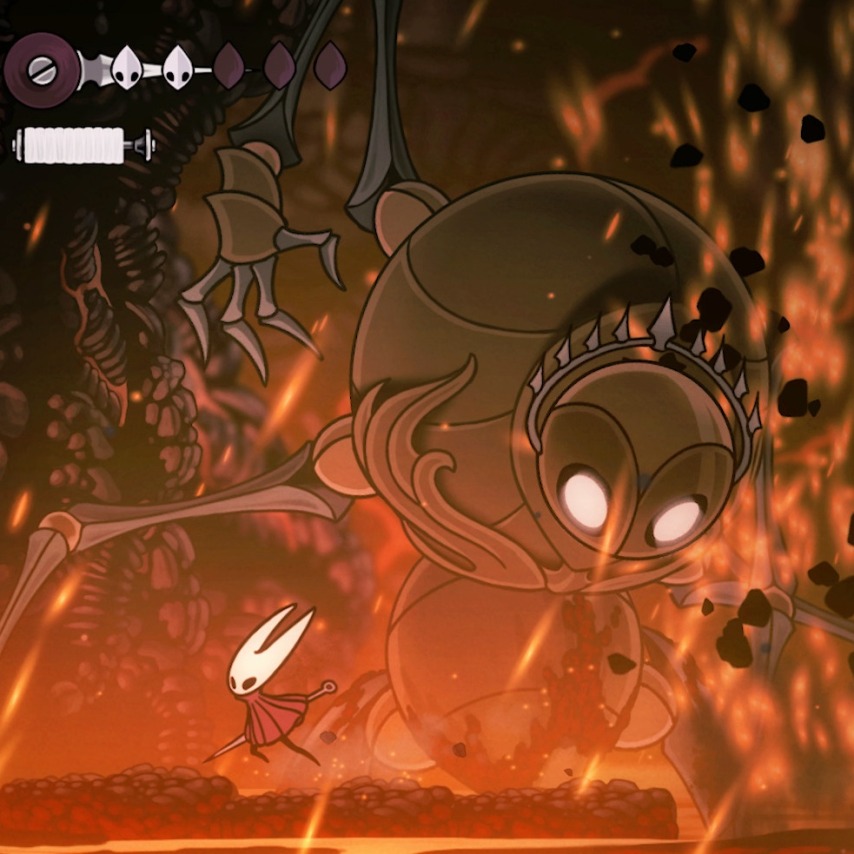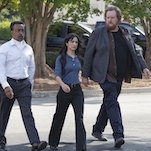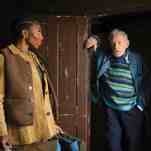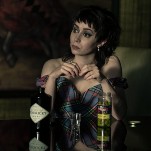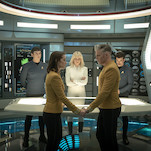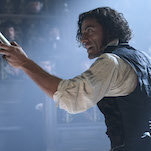His name may not be spoken in the same breath as Harvey Kurtzman’s or Wally Wood’s, but few artists made as profound an impact in as many corners of the EC comics empire as Jack Davis. His supple style lent itself as well to the gritty battlefield stories of Two-Fisted Tales as to the gleeful grotesques of Tales From The Crypt, and when Kurtzman convinced EC head William Gaines to let him head the company’s new humor magazine, Davis left a formidable stamp on Mad as well. Unlike many of his peers, though, Davis spun off his comic-book work into a highly successful illustration career, doing covers for Time and TV Guide as well as iconic movie posters for the likes of It’s a Mad, Mad, Mad, Mad World, which, according to Fantagraphics’ new career-spanning collection Jack Davis: Drawing American Pop Culture, netted him an annual salary that at its height stretched into seven figures. Now in his late 80s, Davis has naturally slowed down in recent years, but the book has provided the occasion for a well-earned victory lap, which brought him to New York’s Society Of Illustrators for a talk with The A.V. Club.
AVC: One of the things that you see in the books is a transition from a more realistic to a more cartoony style.
JD: I think if you turn out as much work as I have turned out, you improve. And Harvey Kurtzman has been a big teacher to me through the years. He was a great, great man. When I first came to New York, he and his wife kind of took me in under their wings and fed me. I’m from the South, I didn’t fit in much, but with him, I would fit in.
AVC: The EC titles, and especially Mad, had such a New York sensibility, specifically a kind of urban Jewish sensibility, which was very much not your background.
JD: I know, but that doesn’t make any difference. I like to see people happy. In my book you can probably read about it, but the only playmate I had in the summer time was a black boy, my age, and we got along great. He was a buddy; he was a friend. He and I used to wrestle and fight and do whatever.
AVC: Especially as far as humor is concerned, though, it’s a fairly specific perspective. Did you feel a kinship with that?
JD: Well, Harvey was just a great teacher. He taught me to simplify things; he was a great simplifier, God rest him. I wish he could’ve gone on further, because he was way ahead of his time. Way ahead. He could write stories, he could be humorous, and his illustrations are beautiful. They’re modern, and they are not my style, but they’re his, and I loved his work and I loved him. He was a good man. He was a good teacher.
AVC: His layouts for the EC stories have been published on their own, which make it clear that he did much more than just hand you a script, or even a panel-by-panel breakdown.
JD: Oh, he would do illustrations before you did the artwork. A while back, I got a thing from a friend of mine in Belgium who sent me a book to sign of Harvey and Willy Elder’s [Little] Annie Fanny. It was awful. I mean, beautifully done, but I just don’t go in for that bit. Again, I’m an old stodge. But it was grotesque, and he wanted me to sign it. And I said, “No, I’m not gonna sign it, ’cause I didn’t have any artwork in it.” I was flabbergasted. My wife wouldn’t even read it. I said, “You gotta see this,” and she said, “No, I don’t want to.” But I can’t imagine it coming from Harvey and Willy Elder, who were straight arrows from way back.
AVC: Little Annie Fanny was very much tailored for the pages of Playboy.
JD: Hugh [Hefner] wanted what he wanted and he got what they produced, the two of them.
AVC: You’ve talked about often being more comfortable working on assignment rather than generating things on your own.
JD: I like an assignment because I’m not a writer or creator, but I can take a story and illustrate it because my mind is kind of bent that way.
AVC: In terms of working with Kurtzman, how much of a lasting influence did working from his layouts have, specifically on your artwork?
JD: It helped. With Harvey, especially. I keep bringing him back up, but Harvey would do rough sketches on tracing paper. He would practically act out everything to you. You’d get carried away with it, say, “I want to go home. I want to illustrate!” So I did it. He was very talented.
AVC: You talk in the book about how much you disliked doing the Tales From The Crypt stories, especially gory ones like “Foul Play,” which was one of Frederic Wertham’s key examples in Seduction Of The Innocent and helped lead to the creation of the Comics Code Authority.
JD: Oh God, I’m telling you. Well I’ve told everybody before, Gary [Groth] and all them. I have a hang-up. I love horror. I love ghost stories, but when it comes to illustrating it for thousands and thousands of young people to see it, I don’t go along with it. I think that happened, and I didn’t know it was happening at the time. I just knew that I would go in and I’d get a check and pick up a script and go home and do it. I sat in a little room and did this horrible baseball story, and it made the Senate [hearings] and everywhere. People liked it but I didn’t. I said, “I can’t do that.” To this day I love all the people at Mad, but Mad had changed. It’s not like it used to be. It has some very good artists but their philosophy is not mine.
AVC: It’s interesting that you could be, by all accounts, so good at something you didn’t like doing.
JD: Well, I am shocked and amazed that so much has been carried on about me. [Laughs.] But I have spent many a years drawing. I’ve drawn and drawn and I’ve been lucky enough and I’ve been blessed to have stuff with Time magazine and TV Guide and that’s quite an achievement, I think. I came along at a good time. I don’t think there was much competition. You had Johnny Severin, you had Willy Elder, Wally Wood. Everybody had their style, and we kept at it. I had my own style and Harvey wrote and he practically illustrated everything in Mad in the beginning. I don’t know, I’ve done everything that anybody can do, I think.
AVC: What are some of the favorite things that you’ve illustrated?
JD: Well, I think my high point is the Time magazine covers; the one I did of Ford rolling up his sleeves is about one of my best. And the one with Kissinger. My book has got them all in there, and I appreciate that. I’m very proud of that book. It tells about when I was young and what you’re asking me about. It’s in there.
AVC: How much direction did you get for something like the Time covers?
JD: Well mostly, I think with Time magazine, when I had an assignment to do the cover, I could get any type of a picture I wanted, whether it was a profile or a smile or anger, you couldn’t miss it. And I copied the photograph among the covers that I’d pick from, and I made up the rest, the body language and everything else. But that has to be a high point, and the movie posters. You’re on your own and there are editors to please, so you do what you can, and I’ve done what I could. I don’t know where it comes from or anything about it, but I think you have a natural talent for certain things. Some people have it for music or drawing. We’re sitting right now in a beautiful brownstone house that’s full of nothing but illustrations from great, great illustrators. I’m happy to be one of them. One of the high-water marks of my whole life is to be in the Hall Of Fame here at the Society Of Illustrators, along with all the old, old, old, old greats, and I’m going to be old, old, old, old pretty soon.
AVC: You’re famous for things like the poster for It’s a Mad, Mad, Mad, Mad World, where there are hundreds of distinct figures.
JD: Well, those are just there to fill in. [Laughs.]
AVC: Do you do those one figure at a time?
JD: I usually did all the backgrounds with pen and ink, and the foreground would be in color with a brush, with a No. 3 Winsor & Newton brush, but the background, sometimes I would have a good ink pen and just doodle heads with different expressions.
AVC: And do one at a time?
JD: Yeah. It came from head. Just like Sergio Aragones, who could sit down and draw, draw, draw from his mind. Who can explain it? I can’t.
AVC: Did you come from an artistic background?
JD: My father used to draw a picture of an Indian with a war bonnet, a profile. It just knocked me out. So I would either copy that or draw that. My mother was a very good watercolorist, but she never kept it up. She was a teacher of retarded children, sometimes. It was a good life. I’ve been exposed to a lot of things. Sports and everything else.
AVC: Do you get a special pleasure out of drawing sports?
JD: I do. I have to draw. I’ve always said, “I can’t read or write, all I can do is draw.” And I draw, and I draw, and I draw.
AVC: Do you still do that for fun?
JD: I still have a rep in New York, who once in a while gives me work. I used to get a lot of work, and they could do billing for me, and the pricing that I couldn’t do. I highly recommend a very good rep for some young artists, unless they can do it themselves, put a price on their own artwork or do the billing and all that. It’s pretty hard for an artist to do, I think. I can’t do it. I can’t even type.
AVC: When you’re not working on something, do you still draw?
JD: Oh, I’ll draw until I step into the coffin. [Laughs.] Horrible to say that creepy stuff.
AVC: I wanted to ask about Mad Monster Party as well.
JD: That was with Arthur Rankin and Jules Bass. They came along at a time when they were interested in my work, so they got me to do the cartooning for them, creating characters.
AVC: How long a process was that for you?
JD: It only lasted about a month, something like that. Paul Coker is a very good friend of mine and I admire his work, Frosty The Snowman and all that. It’s typical of Paul Coker stuff. I just hope he benefits from it.
AVC: It must have been great for you, having liked ghost stories and monster movies, to get to make one.
JD: Yeah, well, Harvey Kurtzman wrote one about a monster party or monster rally, and I drew it. Paul Coker might have worked on some of it.
AVC: It wasn’t seen a lot at the time and disappeared for quite a while, but it’s come back on DVD.
JD: Right. Well it’s like, plant a seed. Things come back. I have done all this stuff a long, long time ago, and all of a sudden now, there’s this book on me. And it’s amazing. I sit there and I keep reading it over and over.
AVC: You mentioned “Foul Play” being brought up in Congress and being accused of ruining the youth of America.
JD: Yeah, and here I am sitting in a little bitty apartment with a railroad track close by and I’m causing all that trouble. I didn’t know it.
AVC: You must have heard from a lot of people.
JD: I didn’t hear from them. I’m sure Bill Gaines, the publisher, heard about it. He had to stand up before the Senate and all that.
AVC: I meant the other way around. Mad especially, the influence of that. It changed people’s lives.
JD: Oh all of that. Mad, the TV show, Mad Broadway show or whatever. I haven’t connected, I haven’t seen it. But it has started a lot of things. Back then, when we were doing Mad, that was Bob and Ray, and that kind of humor was beautiful and great. Now you don’t see it. It’s kind of nasty. Well, not nasty, but it’s a change in philosophy and humor. I always feel like you don’t need to have something nasty to make people laugh. You can shock them with ugly stuff, but a true entertainer has got to come from the heart, has got to make people laugh, and laugh at something good.
